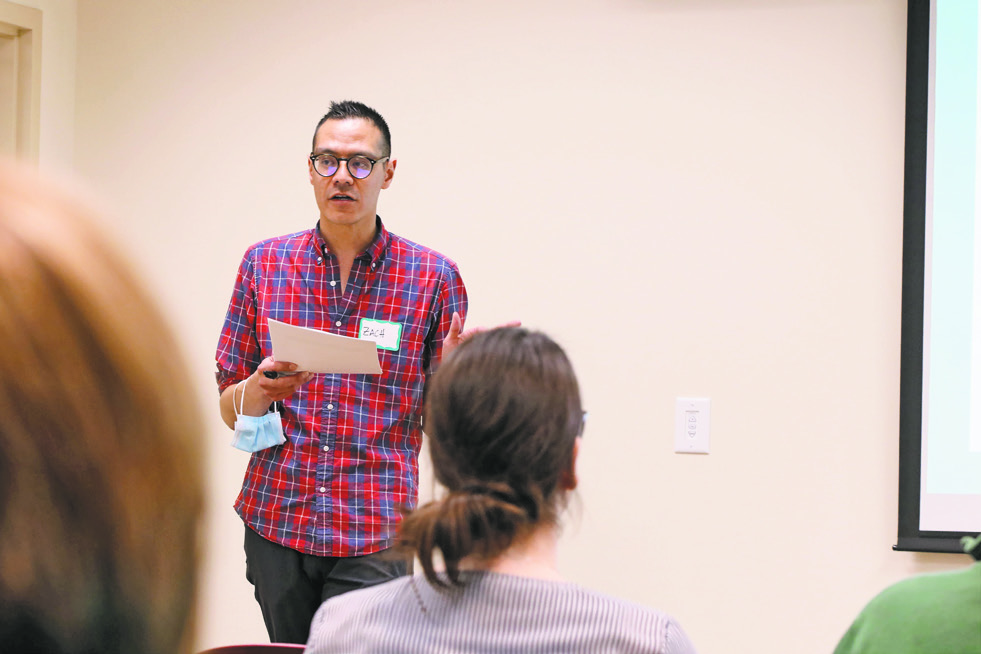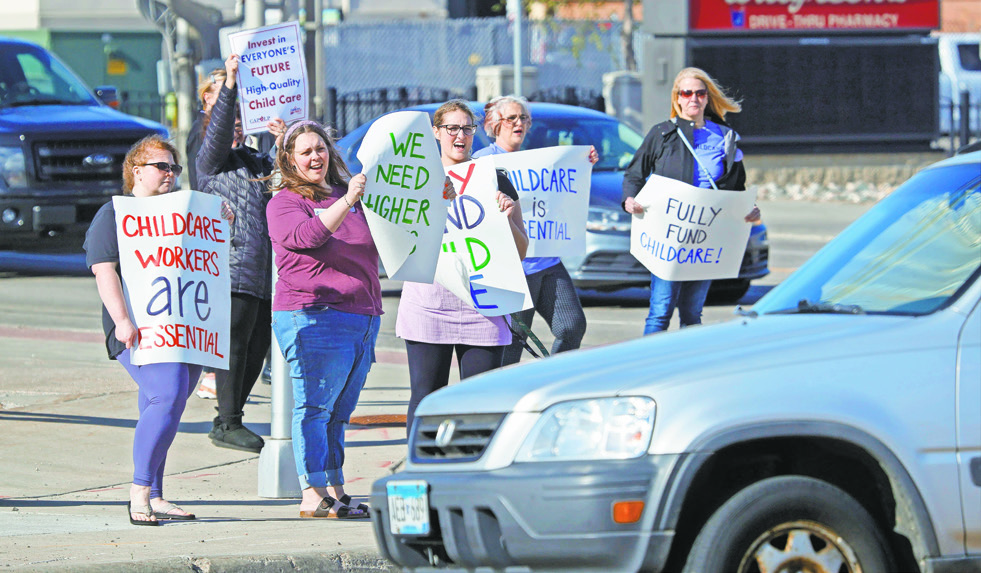




Fargo
Describing areas of North Dakota as “child care deserts,” the North Dakota Child Care Action Alliance began their yearlong campaign last week to resolve what they described as a statewide crisis.
Statistics taken from North Dakota KIDS COUNT, a statewide resource for data on the well-being of children, show that the coronavirus pandemic has exacerbated the problems associated with child care, said Zach Packineau, director of outreach and programming for North Dakota Voices Network, a nonprofit civil rights group.
The main issues include the affordability of child care, the worker shortage with low pay of about $11 an hour and
the lack of availability for child care centers, Packineau said.
As an organizer for the campaign’s listening sessions, he hopes to help improve the crisis by first listening to families across the state, then seeking legislative change, he said.
“There is a need for something to be done at the state level for child care,” Packineau said, reminding the audience during the first listening session in Fargo that the next legislative session is about eight months away.
The listening sessions will continue until the end of 2022, and organizations like the North Dakota Child Care Action Alliance, North Dakota KIDS COUNT, National Association of Social Workers, North Dakota Farmers Union, North Dakota United and Prairie Action ND, a nonprofit communications organization, are involved, according to Packineau.
“Families need affordable and accessible child care, and I think the pandemic just really exacerbated the issues that were already there,” he said. “Child care workers need living wages, and those are the things that we are passionate about.
Those are the things we want to bring to North Dakotans.”
Average wages for child care workers have risen in recent years but decreased from $11.61 to $11.19 an hour from 2020 to 2021, Packineau said.
“This is barely hovering just above poverty level; in fact, a quarter of educators live in poverty in North Dakota,” he said.
A total of 14 counties currently meet less than 60% of the child care demand, and statewide the supply of child care meets 88% of the demand, the North Dakota KIDS COUNT report stated.
In Sheridan County, for example, supply currently meets 59% of the demand.
To make matters worse, child care during non-traditional hours is limited across the state, with only 3% of licensed facilities open on weekends, 4% open during evening hours and 25% open during early morning hours, Packineau said.
Child care costs are often out of reach for parents and can cost as much as college tuition, he said. About 5,000 children received financial assistance in 2020, but 21,000 children live below the poverty line in North Dakota.
In Minnesota, child care issues are also attracting attention. On Monday, May 9, child care workers, teachers and parents wore purple to highlight the need for reforms with the national “A Day Without Child Care” event.
People gathered at 5 p.m. at various intersections throughout Moorhead to call for investment of the state’s $9.3 billion surplus into child care, according to a press release from ISAIAH, a statewide social justice organization.
Rep. Josh Boschee, D-Fargo, said child care investment was the first program to get cut by the North Dakota Legislature in 2015, and monies to help improve the child care system could easily be obtained by triggering more taxes from oil revenues or from other areas of the state’s budget.
“This is not a new problem. For 20 years, it’s been a problem, but we have decided not to do anything about it,”
Boschee said. “It’s a decision of values that says we don’t support families, which is not a North Dakota value.”
“Child care deserts exist across the state, as well as Fargo,” said Amy Jacobson, who represented Prairie Action ND as part of the coalition.
“What we’re finding is, we came together with this coalition because it feels that we’ve all gone through this terrible pandemic together and it has really exposed that it is more than fractured. It is completely broken,” she said. “Our workers are saying we want to provide child care, but they can’t afford it. They don’t get paid more than $11 an hour.”
Sky Purdin of Jasmin Child Care and Preschool, a state licensed child care center and preschool for children ages 6 weeks to 12 years, has tried to open up her child care center for evening shifts, but staffing shortages forced her to stop.
“It goes around and around in circles. I try to hire people, but only a percentage show up for orientation, and zero show up for the first day of work,” Purdin said.
Another problem she faces when recruiting people is the red tape that can take months to sort through.
“When I started (working in) child care, I would get recruits fingerprinted in one day. Now, the process could take two weeks or more,” she said.
“In other states, they do not have this delay,”
Jacobson said about the credentialing process.
“We are continually examining what other states are doing for child care. There are other states that have come up with creative solutions and eased the burdens.”
“We’re not seeing child care as a viable career. We’re talking about an entire generation of educators that no longer exist because we don’t want to find them. People don’t want to do their jobs because it doesn’t pay enough. We have to get the state to pitch in and re-professionalize this field,” said Andrew Bushaw, field director for the North Dakota AFL-CIO.
Jamie Lange, of West Fargo, attended the listening session in Fargo. She gave birth to twins last summer but has had difficulty finding a place to take care of her children when she works.
“It’s created a lot of stress, and we’re constantly missing work now. We now have to leave work early to get there on time to pick them up. I feel the lack of staffing is impacting my kids, and lack of consistency and routine,” Lange said.
She rarely sees the same teachers or child care workers when she drops off her children.
“I know they’re doing everything they can, but at the end of the day it is the kids being impacted here,” she said.
Mawaye Brownell, also of West Fargo, is a mother of two children, she said during last week’s listening session.
She couldn’t find a place to watch her children, so her grandmother traveled from the Minneapolis area to help, “but she’s too old to look after a super active child,” Brownell said.
Robin Nelson, a Fargo Public Schools board member, runs 13 child care centers in the area and agreed that new legislation is needed.
“Consumers and providers are at a breaking point. If we cannot pay our employees well, we will sacrifice quality,” she said. “We are all in a tough position, and we all want to help kids, but we need some help.
Finally, our employers and our state has realized this is a true workforce issue, and we need to capitalize on this now. This is going to take all of us, and we need to push our state a little bit harder.”
Jacqueline Dotzenrod, from Fargo, worked at a local child care center while she was a college student during the mid- 2000s.
“The pay wasn’t great, but my cost of living was low,” Dotzenrod said.
She looked after 12 children each shift and felt like they weren’t getting the individualized attention they needed.
And when child care workers are being paid such low wages, parents often poach them away, Dotzenrod said.
“This has been a problem in our community for a very long time, and that’s why I left — because a family approached me and asked me to be a nanny,” she said.
Readers can reach Forum reporter C.S. Hagen at 701-241-5535 or cshagen@forumcomm.com.

